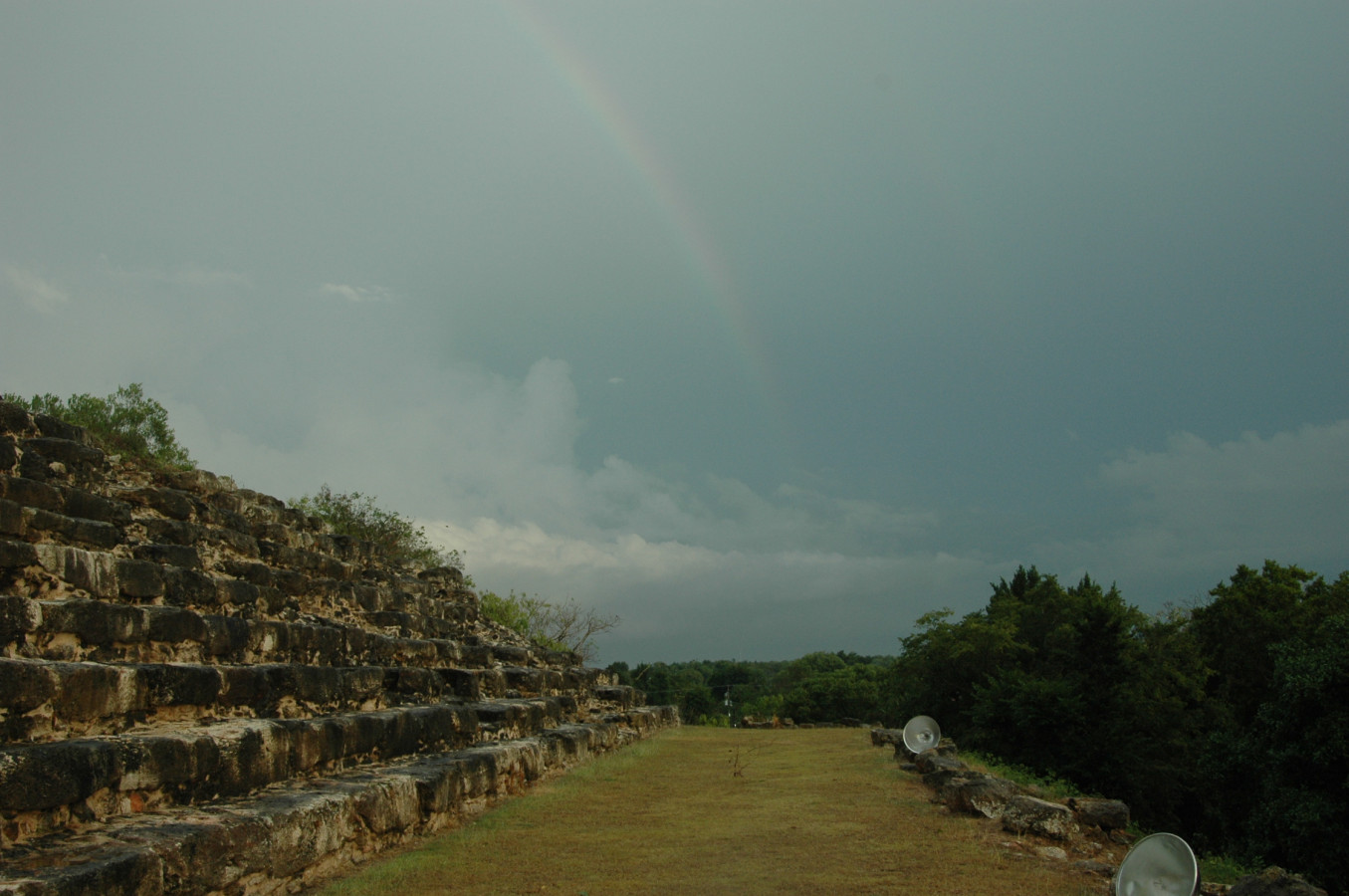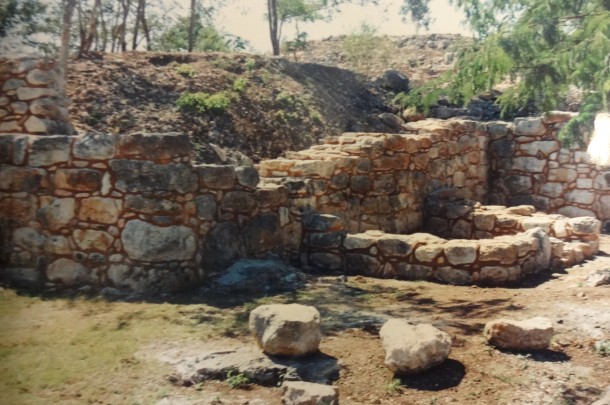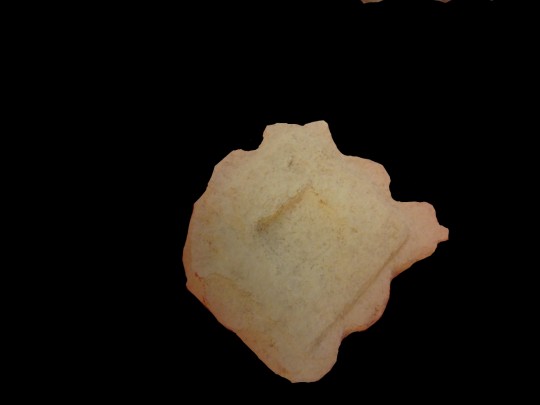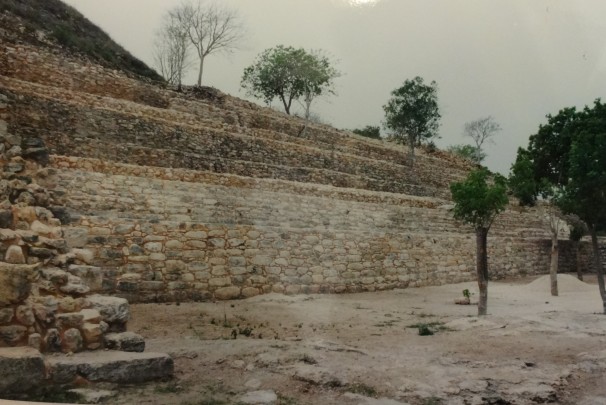Izamal
Dew falling from heaven
One of the most ancient cities of the Maya area (even older than Chichén Itzá and Uxmal), for centuries it was a place of pilgrimage for the inhabitants of the region. From the top of the Kinich Kak Moo pyramid there is a spectacular view.
About the site
The archeological site of Izamal is in the town of the same name, 44 miles east of the city of Merida. The central part of the settlement, where the most important buildings are located, features an enormous plaza oriented from north to south. The combination of ancient, colonial and modern buildings has earned Izamal the title of “city of the three cultures.” It is also known as the “city of the hills.”
The people of Izamal were especially devoted to the goddess known as Zamna, the creator god and benefactor of the Maya, who was worshiped in two of the principal buildings on the site’s main plaza.
Izamal was the most developed city of the north Yucatan, at least until the Late Classic, when it entered a gradual decline. It ruled over a territory not only by means of a network of roads, called sacbeoob, which covered an area of around 2,000 square miles, but it also had access to a long coastline with 11 port towns which could reach even more distant lands for the export of local products.
It must be emphasized that this center developed and disseminated a particular style of architecture known as “megalithic,” typified not just by the use of large blocks of stone fitting together without mortar, but by other features such as apsidal storeys, rounded and/or recessed corners, broad staircases, sloped panels, apron moldings, stepped vaults and a predominance of superstructures made from perishable materials.
The site was occupied for a long period, in excess of 2,500 years, since it began in the Middle Preclassic period (700-450 BC). Times of peak activity were in the Early Classic (250-600 AD) and the Late Classic (800-1000 AD) when the most important buildings were erected, and the extensive network of sacbeoob, or roads, reflecting the political and economic status of Izamal as the ruler of a significant region of the north of the Yucatan peninsula.
It was specifically in this period of intense building activity that the settlement reached its peak, as defined by the area covered and the monumental size of the buildings, also reflected in the number of smaller sites located in its periphery, initially with a certain degree of autonomy with respect to the central site, which as they were incorporated created greater dependency on a centralized political and economic authority.
Izamal was practically abandoned in the Postclassic period (1100-1520 AD), with only a few villages remaining, however it continued to be an important center of worship for the Maya, which is why the Spanish conquistadors chose to settle this site, dismantling the main structures and reusing the building materials for the new city they were founding.
The people of Izamal were especially devoted to the goddess known as Zamna, the creator god and benefactor of the Maya, who was worshiped in two of the principal buildings on the site’s main plaza.
Izamal was the most developed city of the north Yucatan, at least until the Late Classic, when it entered a gradual decline. It ruled over a territory not only by means of a network of roads, called sacbeoob, which covered an area of around 2,000 square miles, but it also had access to a long coastline with 11 port towns which could reach even more distant lands for the export of local products.
It must be emphasized that this center developed and disseminated a particular style of architecture known as “megalithic,” typified not just by the use of large blocks of stone fitting together without mortar, but by other features such as apsidal storeys, rounded and/or recessed corners, broad staircases, sloped panels, apron moldings, stepped vaults and a predominance of superstructures made from perishable materials.
The site was occupied for a long period, in excess of 2,500 years, since it began in the Middle Preclassic period (700-450 BC). Times of peak activity were in the Early Classic (250-600 AD) and the Late Classic (800-1000 AD) when the most important buildings were erected, and the extensive network of sacbeoob, or roads, reflecting the political and economic status of Izamal as the ruler of a significant region of the north of the Yucatan peninsula.
It was specifically in this period of intense building activity that the settlement reached its peak, as defined by the area covered and the monumental size of the buildings, also reflected in the number of smaller sites located in its periphery, initially with a certain degree of autonomy with respect to the central site, which as they were incorporated created greater dependency on a centralized political and economic authority.
Izamal was practically abandoned in the Postclassic period (1100-1520 AD), with only a few villages remaining, however it continued to be an important center of worship for the Maya, which is why the Spanish conquistadors chose to settle this site, dismantling the main structures and reusing the building materials for the new city they were founding.
Practical information
Monday to Sunday from 08:00 to 17:00 hrs. Last entry 16:00 hrs.
Free entry
Abren al público los conjuntos arquitectónicos Itzamatul, Habuc, Tu'ul y Chaltún Ha.
Se localiza al norte del estado de Yucatán a 70 km al oriente de Mérida.
From the city of Merida take Federal Highway 180 towards Cancun, and in the town of Hoctun turn off on the road leading to Izamal.
Services
-
+52 (999) 944 4068, +52 (999) 944 0033
-
This email address is being protected from spambots. You need JavaScript enabled to view it.
Directory
Administrador del Centro INAH Yucatán
Felipe de Jesús Flores Laguna
This email address is being protected from spambots. You need JavaScript enabled to view it.
+52 (999) 913 4034, ext. 398006















